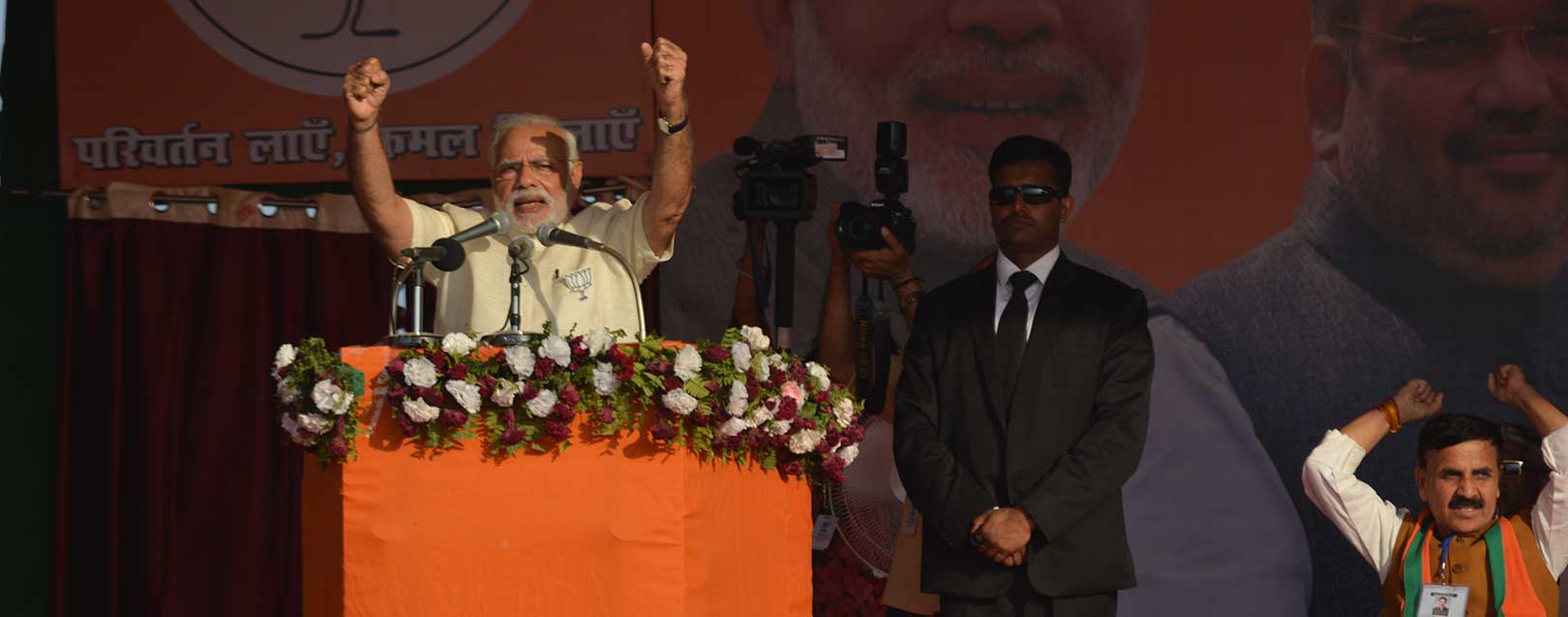
Q3 GDP numbers surprise at 7%
By Abin Daya
It has been over 19 months since the tumult over India’s GDP began. Many economists have questioned the government’s method of calculation since it was implemented in 2015. The latest announcement by the Indian government has placed the GDP at 7% which is a sudden increase from 4.7% as per growth estimates released in May 2013-14.
The data released by the Central Statistics Office predict the GDP of Q3 FY17 at 7%. Let us look at the drivers behind it by breaking them up into components and comparing them with the previous figures.
- India’s GDP for Q3 of FY17 grew by 7% y-o-y, lower than the 7.4% (revised) growth of Q2 FY17 and higher than 6.9% of Q3 FY16
- This has come as a surprise, as it gives an indication of demonetisation not having impacted economic activity in a significant manner
- However, it would be worthwhile to look at the individual components in a bit more detail

- The two broad components of the GDP are Gross Value Added (GVA) and Net Indirect Taxes, which is indirect taxes – subsidies
- While net indirect taxes have been consistently positive from Q1 FY16, they have seen marked improvement over the past 4 quarters with double-digit growth
- This can be attributed to two factors: (i) Reduction in overall subsidy bill, including fuel subsidies, (ii) Significant increases in excise duties for fuel, which have kept retail prices of fuel artificially elevated even when crude prices fell sharply
- As you can see from the above chart and the accompanying data table, GVA for Q3 FY17 has grown y-o-y by 6.6%, lesser than 7% of same quarter in the previous year, and the least in 7 quarters
- The GVA is considered a better measure of economic performance than GDP, as it excludes taxes and subsidies and thus reflects core economic activity
- The 11.6% y-o-y growth in net indirect taxes during Q3 FY17 has helped push the GDP growth to 7%, against 6.9% of Q3 FY16
- The high base in net indirect taxes, starting from Q4 FY16 could be a dampener starting from next quarter onwards, but would prefer to wait and see rather than make any predictions
- It would also be worthwhile to look at the individual components of the GVA and how they have performed over the past

- The GVA component of Public Administration, Defence & Other Services grew by 11.9% in Q3 FY17, the highest in 8 quarters
- I’m not so certain about the growth figures for Manufacturing, which has come in at 8.3% for the quarter, considering that demand was tepid for the quarter due to demonetisation
- However, compared to the growth of 12.8% of Q3 FY16, growth in this segment has fallen sharply during the quarter
- Also, another component, “Trade, Hotel, Transport, Communication & Other Related Services” has grown at 7.2%
- Considering the predominance of cash as the medium of transaction in this segment, this was expected at low growth or negative growth levels
- The discrepancy between expected and reported numbers could also be attributed to deficiencies in data collection, as the calculations did not factor in the informal sector, which was the worst hit after demonetisation
- Looking at the expenditure components of the GDP throws up some interesting observations as well

- Three components – Private Final Consumption Expenditure (PFCE), Government Final Consumption Expenditure (GFCE) and Gross Fixed Capital Formation (GFCF) – contribute almost 95% - 99% of total GDP
- Out of these, PFCE, the spending by households, looks too high at Rs.17.8L Cr – highest in the past 15 quarters that I’ve been tracking
- This represents a growth of 10.1% y-o-y and 11.1% Q-O-Q, and goes against empirical evidence of reduced consumer demand after demonetisation
- GFCE, government spending for people, has grown at 20% y-o-y to Rs.3.2L Cr
- Y-o-y growth rates of PFCE and GFCE are the highest in the past 11 quarters that I’ve been tracking growth for; could be the highest for a longer period too
- It is also interesting to compare the quarterly GDP numbers from previous publishings and currently released numbers
- Q1 and Q2 FY 16 GDP numbers were increased by 0.28% and 0.25% respectively from previously published, in the current release
- Q1 and Q2 FY 17 GDP numbers have moved up by 0.36% from previously published. GDP growth improved by 0.1% as a result, for these time periods
- Q3 FY16 GDP was reduced by 0.73% from earlier prints. Compared against what was originally published, GDP growth for Q3 FY17 would have been only 6.18% instead of 7%
- Looking from where we are, it is difficult to estimate the implication and to understand if these are genuine revisions by way of final data coming in, and hence have to take these at face value
- It is common for numbers to be revised as data becomes clearer in future (what is published currently is the ‘estimate of quarterly GDP’), and the current quarterly GDP numbers could also get revised down, thereby bringing down the growth rates
Core sector growth slows
- Impact of demonetisation seems to have hit the eight core sector industries with a lag, in Jan 2017
- Core sector growth slowed down to 3.4% y-o-y, the slowest since Aug 2016, and significantly lower than 5.7% during same month last year
- The growth was also lower than the level of 5.6% achieved in Dec 2016, belying expectations of a sustained revival
- For the Year-to-date (Apr-Jan) period, the 8 industries grew at 4.8%, as against 2.9% last year

- Looking at the individual sectors, except for steel and refinery products, none of the other industries have had a great run this year
- These two industries put together contribute more than one-third of the overall core sector index, which has helped the sectoral growth to be better than last year
- Even though refinery production contracted by 1.5% y-o-y in Jan 17, excellent growth in the earlier part of the FY has helped maintain the growth rate for the year
- Steel industry has been performing well since Aug, and has achieved double digit growth rates in 5 out of the last 6 months
- It has also helped that electricity, with a weightage of 10.32 in the overall sectoral weightage of 37.9, hasn’t fared too badly either compared to last year
- One industry which hasn’t had a great time is the cement sector, which has contracted by 13.3% in Jan 2017
- The slow-down in construction activity post demonetisation has hit the industry pretty hard, with production figures dropping significantly for the past 3 months, leading to steep fall in industry growth rates

- Considering that the core sector industries contribute almost 38% weightage to the overall manufacturing sector, the slow-down in these industries is also expected to reflect in IIP numbers for Jan 2017
Passenger vehicle sales grow in Jan
- The auto industry seems to be on a very fragile recovery mode in Jan 2017, after the negative impact of demonetisation in Nov and Dec 2016

- Passenger vehicle sales grew by an impressive 14.4% in Jan compared to a contraction of 1.4% in Dec 2016
- All three segments of passenger vehicles – cars, UVs and vans – registered excellent growth during Jan 2017
- Utility Vehicles grew the most at 24.2%, and passenger cars grew by 10.8%
- While commercial vehicle sales contracted 5.1% in Dec, the contraction narrowed to 0.7% in Jan
- Medium & Heavy vehicle sales, which had contracted by 13.8% in Nov and 12.4% in Dec, saw flattish growth of 0.6% in Jan
- LCV sales dropped marginally by 1.9%, as against a growth of 1.2% in Dec, and -10.6% in Nov
- Two wheeler sales were the most affected by demonetisation, with numbers contracting by 7.6% in Nov, and 23.9% in Dec
- Scooter sales, which had contracted by 26.4% in Dec, had another bad month in Jan, with sales dropping by 14.5%
- Motorcycles fared a little better – against a decline of 22.5% in Dec, sales contracted by 6.1% in the month of Jan
- India is the 4th largest automobile market in the world, with almost 3Mn new vehicles registered in the calendar year 2016, behind China (23.7Mn), United States (17.5Mn) and Japan (4.1Mn)
Some numbers to note*
*figures in brackets indicate movement during the week
- FX reserves: $362.79Bn as on Feb 24, 2017, as against $362.73Bn in the previous week (+$64Mn)
- USD/INR: Rs.66.8050/$ (INR appreciated by Re 0.02)
- Indian Crude Basket: $54.82 (-0.3%)/Rs.3,658.54 (+0.29%)
- Equity Markets: Sensex 28,832.45 (-0.21%); NIFTY 8,897.55 (-0.47%)
- LIBOR: 6 Mths – 142 bppa; 12 Mths – 179 bppa
- MIBOR: Overnight – 6.12; 1 month – 6.41; 3 months – 6.56







 to success.
to success.